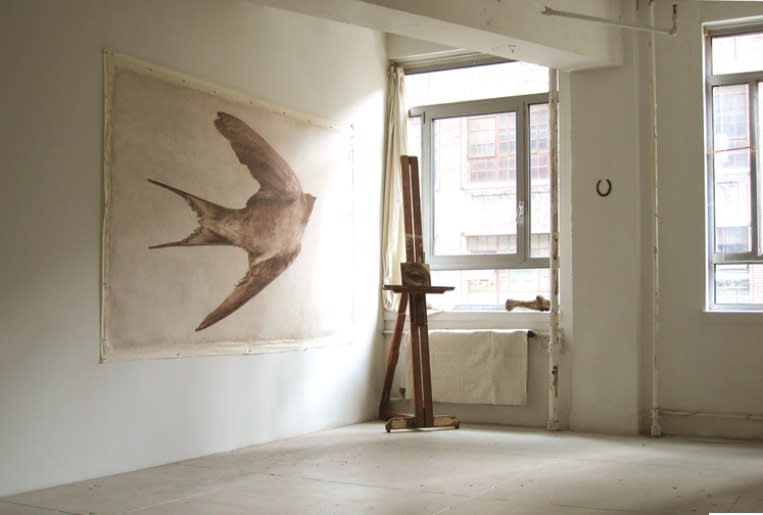Animal Magnetism: Kate Javens captures the nobility of man and beast
One of the unfortunate results of the grip conceptual art has had on the art world since the '60s is that it's easy to become suspicious of beauty.
Like a perpetually distrustful lover, we wonder what beauty's agenda is. Why is it so intent on seducing us? What does it want from us? What lack of substance or ideas is it trying to hide?
So it is a profound relief, based on the experience of Kate Javens' paintings at Marcia Wood Gallery, to simply marvel at painterly beauty and that strange witchcraft of artmaking in which sublime experiences are rendered with such cunning, nimble strokes. Move in close to Javens' paintings and their realism evaporates in fat, visibly striated brush marks. Part of the intoxicating power of painting is its power to deceive us, to create an illusion of life, flesh, sentience, where only paint and canvas coalesce.
Things are supposed to be clearer, more detailed, as you draw closer, but painting is different. The closer you get, the more its illusion recedes and the more the painter is revealed as a kind of magician who allows us to see the magic, but not the trick.
In formats both epic and intimate, Javens renders the animal world with a majestic, haunting mystery. Her paintings are romantic, endowing cows and horses, crows and bison with the kind of dignity normally reserved for human portraiture or the bas-relief presidential profile on a coin. A painting of a crow's head done in profile, a proud beak jutting ahead like a blue blood's aquiline nose, suggests the animal world can also embody qualities like depth of character and nobility.
Javens' palette is elementary and seductive - a range of sepias, caramels and muted grays, which give her animal paintings the illusion of age. There is the impression, looking at the work, of these animals distanced from us by great swaths of time.
Beauty alone could buoy Javens' work, but it is an added pleasure in the New York artist's solo show, Named For..., to find that her paintings also contain the kind of content that endows them with a poetic gravity. Javens has named her works after people who possess, in the words of the Philadelphia Inquirer, "moral intensity." It is an apt description for the connective tissue between abolitionists and poets, scholars and conservationists.
The people commemorated are well known, like poet Walt Whitman (a moth), and also arcane, like Andrew Furuseth, an obscure historical figure who fought for the welfare of sailors in the Pacific; Javens represents him as a crow.
To embody Harvard law professor and race scholar Derrick Bell, Javens has chosen a bull whose stoic, immovable posture - comparable to the intractable character of the law - is rendered in an epic 100-by-147-inch portrait on muslin.
The solidity of that beast is distinct from the more willowy, active horses in "Named for Benjamin Drew." The animals are captured in several portraits with ears pricked back, flared nostrils and raised veins in a gesture of speed and stealth that seems somehow appropriate to the runaway slaves whose experiences journalist Drew documented.
Javens capitalizes on the special, equally magical and mysterious place animals hold in the world. As with paintings, drawing closer does not necessarily clarify them: It is only when we pull back that the true multidimensionality of the animal world is revealed. We are moved by animals because they often seem our spiritual betters, absent of the human foibles of greed, envy, hatred and such that make us less than ideal. Javens takes advantage of the integrity animals possess (or that we endow them with), and uses it to convey the comparable moral superiority of these human idealists and intellects.

